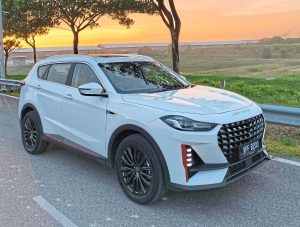The Sion.
FRANKFURT: Using solar energy for cars isn't new of course, but it's taken on a fresh impetus now that electric vehicles are searching for the maximum range.The idea is neither crazy nor a gimmick, according to the Fraunhofer Institute for Solar Energy Systems (ISE) in Freiburg, Germany.
"In order to achieve a CO2-free energy supply in all sectors, we have to massively push ahead with the expansion of photovoltaics, beyond just house roofs and open spaces," said ISE director Andreas Bett.
"In the future, solar modules will be integrated even more into our built-up environment, for example in vehicles," he says.
According to studies by the institute, cars with photovoltaic cells on the roof could, depending on the size of the usable area and the solar radiation, generate enough electricity to power a car for more than 2,000 extra kilometres a year.
Start-up Sono Motors has proclaimed its Sion small car to be the first self-charging electric car. It has around 250 barely visible solar cells that the manufacturer says will be able to power the car for up to 35km a day in good weather.

Solar cells on the roof of the Prius PHEV.
There's also a socket for conventional charging and a battery with the capacity for 255km.
The car is expected to go on sale in 2022 or 2023 for a starting price of around US$30,000 (around RM122,000).
In the Netherlands, another start-up last year presented the much sleeker Lightyear One, which is designed for long-haul driving.
According to the manufacturer, the flat and aerodynamic coupé has five square metres of solar cells under its metal skin, providing enough energy for an additional 70km a day on top of the battery range.
Sales of the four-door model with a range of up to 725km should start this year for around US$215,000 (RM870,000).
Third in the group of solar cell-powered vehicles is the American start-up Aptera. For several years now, the company has been working on an idiosyncratic tricycle with extremely low air resistance and it has now added solar panels to the design.
With an area of three square metres, the 180 cells are supposed to collect enough electricity for almost 20,000km per year.
According to company boss Chris Anthony, that should allow most customers to get by without ever needing to plug the vehicle into a power socket.
Production is slated to begin this year and the vehicle should cost between US$30,000 and US$60,000 (RM243,000), depending on the specifications.
Established large-scale manufacturers are also turning to solar energy.

The Aptera.
Toyota, for example, offers a Prius plug-in with a solar roof, which is supposed to provide an extra 5km of electric travel per day. With 200 sunny days a year, that would add up to more than 1,000km.
Hyundai also uses solar cell technology in its US model Sonata and it's reported that when the Korean manufacturer brings out its Ioniq 5 electric car this summer it will have a solar roof to add more range.
Toyota is also experimenting with incorporating larger areas of solar panels on the bonnet and trunk lid of the Prius to generate more electricity. However, the prototypes don't look particularly elegant.
However, solar cells don't have to be bulky, according to the Fraunhofer Institute.
The institute has developed a solar roof that can be painted any colour and thus becomes almost invisible. On a mid-range car the roof should be able to generate enough electricity for up to 10km per day.












